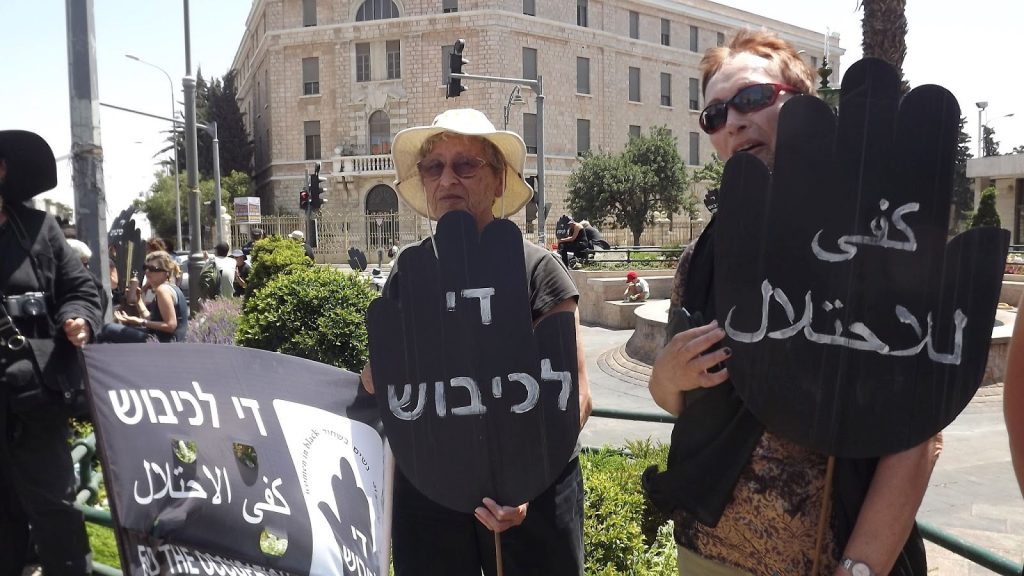To mark 52 years since Israel’s occupation of the Palestinian territories it conquered in June 1967, Women in Black will hold four special protest vigils today (Friday, June 7), beginning from 13:00 at locations around the country: in Jerusalem’s Paris Square; at the entrance to Kibbutz Gan Shmuel; in Tel Aviv on the corner of King George Street and Ben Zion Boulevard; and in Haifa at the corner of Ben-Gurion Boulevard and HaGefen Street. The organization has called upon the public: “Women and men come join us to protest 52 years of one long disaster! End the occupation!”

Women in Black holding a Friday protest vigil at Paris Square in central West Jerusalem, near the official residence of the Prime Minister; the black placards in the shape of a stop sign read “End the Occupation” in Arabic and Hebrew. (Photo: Women in Black)
Leftist Israeli women in West Jerusalem formed the first group of Women in Black in 1987, following the outbreak of the First Intifada. In the thirty-two years that have elapsed since then, they have held a protest vigil every Friday at Paris Square in central Jerusalem (near the official residence of the Prime Minister), dressed in black to symbolize their mourning for all victims of the conflict and the illegal occupation of the Palestinian territories.
At the peak of the Intifada, Women in Black held thirty simultaneous weekly vigils at various locations throughout the country. Subsequently, weekly vigils at the four permanent locations cited above became an iconic part of the struggle to end the occupation.
Initially the group of anti-occupation women protestors had no name, but it was soon identified with the black clothing they wore, which also helped create distinctive demonstrations which were hard to ignore.


